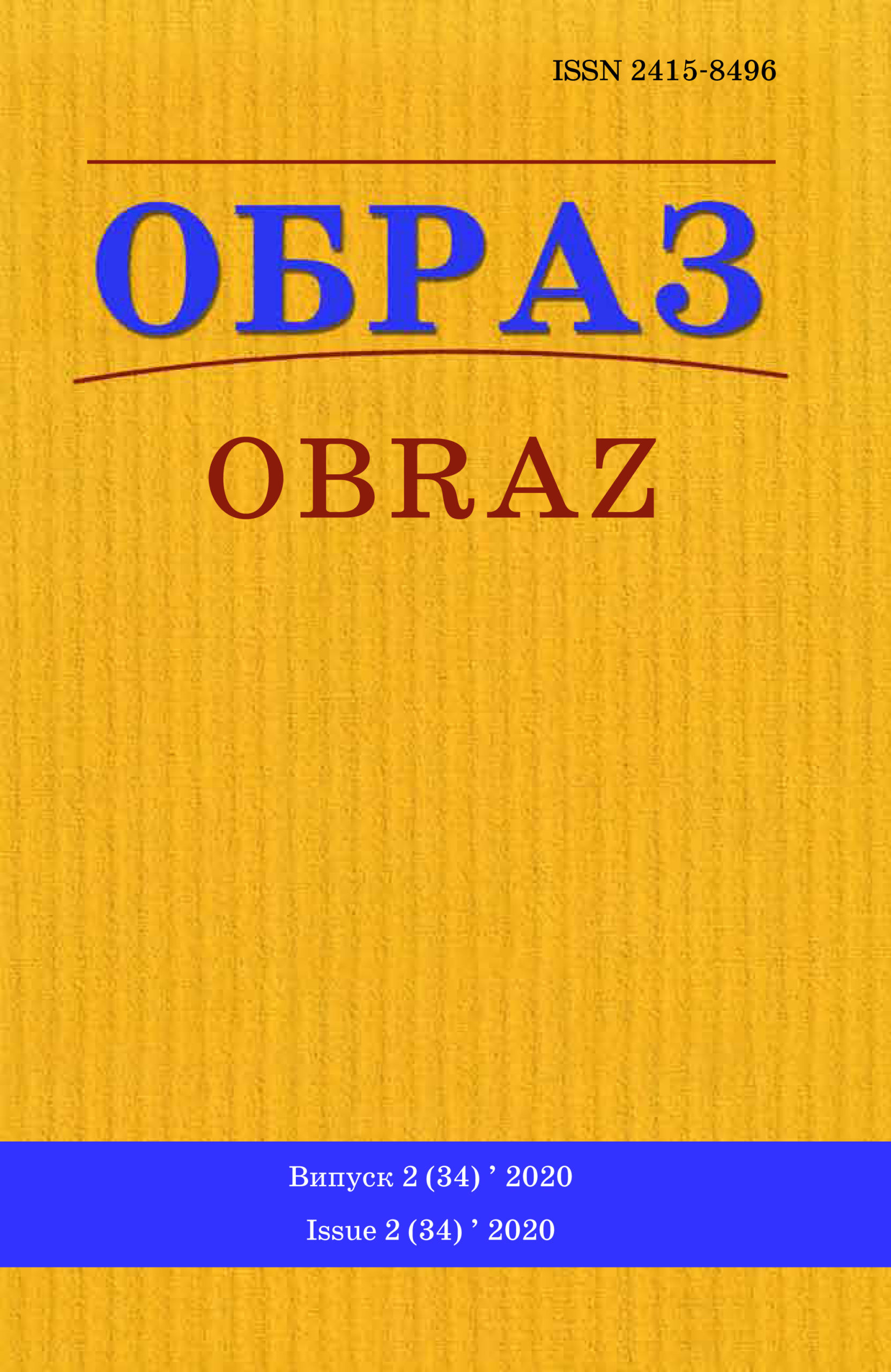Abstract
Introduction. The relevance of the study is that to date, personalized sources as a mechanism for forming a system of local media reports on an important medical topic – «COVID-19 virus» have not been studied. The aim of the study is to determine the role of personalized sources in constructing information about COVID-19 for modern media consumers. Methodology. The main method in the article was the content analysis of media reports about COVID-19, which were broadcast by authoritative mass media of the following regions of Ukraine: Mykolaiv, Ternopil and Chernivtsi. Results. The study found that the main personalized sources of information about COVID-19 in this media dimension are professional, political, general and authoritative. It is established that the use of each of the types of sources and the choice of their composition forms both a positive and a negative trend in the coverage of this topic. Of the positive features of informing about COVID-19 for professionals is typical to broadcast professional opinion in refuting the information of disinformers, to form a broad professional worldview; for politicians - to refute fakes and report on a number of important anti-epidemiological measures; general - to form a positive emotional presentation of preventive information, to express support for quarantine measures in the state; authoritative - to integrate preventive information into its socially significant PR-actions. Due to the negative specifics of informing professionals, it is typical to cover sensational facts that are insufficiently confirmed by competent circles; political - the use of different information contexts (the use of messages with a PR context and with scientific statements that lack the confirmation of the competent circle), which exclude objective perception; for general - the use of wording about COVID-19, which misinform; for the authoritative - overloading people’s minds with image information that does not allow to constantly update preventive information. Conclusions. The significance of the article for science lies in the acquisition of valuable facts in the studied specifics of informing about COVID-19 with the introduction of the mentioned personalized sources. The practical value of the obtained results of the research lies in the formation of materials for teaching media literacy of the population and the creation by media professionals of quality materials about COVID-19.
References
1. Beliakova, I. Shcho maiut u raionakh, aby likuvaty khvorykh na koronavirus? Ekskliuzyv «20 khvylyn» [What do they have in the districts to treat coronavirus patients? Exclusive «20 minutes»]. 20 khvylyn. Retrieved from https://te.20minut.ua/Zdorovya/chi-gotovi-v-usihrayonah-ternopilschini-priymati-hvorih-na-koronaviru-11047061.html [in Ukrainian].
2. Tishchenko, P., Yudyn, B. Bioetika i SMI: rekomendatcii dlia zhurnalistov [Bioethics and the Media: Guidelines for Journalists]. Moskow, 2008. [in Russian].
3. Dvorianyn, P. (2011). Dzherela informatsii: nedoliky ta perevahy (zakordonnyi ta vitchyznianyi dosvid) [Sources of information: disadvantages and advantages (foreign and domestic experience)]. Naukovi pratsi Kamianets-Podilskoho natsionalnoho universytetu imeni Ivana Ohiienka. Ser. Filolohichni nauky, 25, 97-103. [in Ukrainian].
4. Zdoroveha, V. (2004). Teoriia i metodyka zhurnalistskoi tvorchosti: pidruchnyk [Theory and methods of journalistic creativity: a textbook]. Lviv : PAIS, 2004. [in Ukrainian].
5. Kozyriatska, S. (2015). Medychna zhurnalistyka v konteksti naukovoi [Medical journalism in the context of science]. Psykholinhvistyka, 27, 257–264. [in Ukrainian].
6. Koronavirus, Ternopilshchyna ta Ternopil. «Mezha pravdy» [Coronavirus, Ternopil region and Ternopil. «The limit of truth»]. Retrieved from https://tv4.te.ua/%d0%ba%d0%be%d1 %80%d0%be%d0%bd%d0%b0%d0%b2%d1%96%d1%80%d1%83%d1%81-%d1%82%d 0%b5%d1%80%d0%bd%d0%be%d0%bf%d1%96%d0%bb%d1%8c%d1%89%d0%b8%d0 %bd%d0%b0-%d1%82%d0%b0-%d1%82%d0%b5%d1%80%d0%bd%d0%be%d0%bf/ [in Ukrainian].
7. Medzhydova, N. (2004). Medytsynskaia zhurnalystyka: nastolnaia knyha [Medical journalism: a table book]. Baku: Ziya-Nurlan, 2005.
8. On amendments to some acts of the Cabinet of Ministers of Ukraine № № 291. (2020, April 22). Postanova Kabinetu Ministriv Ukrayiny [in Ukrainian].
9. On prevention of the spread on the territory of Ukraine of the acute respiratory disease COVID-19 caused by the coronavirus SARS-CoV-2 № № 211. (2020, March 22). Postanova Kabinetu Ministriv Ukrayiny [in Ukrainian].
10. Tvorohova, N. (2007). Klynycheskaia psykholohyia: slovar [Clinical psychology: dictionary]. Moscow: PERSE. [in Russian].
11. Ternopoliany cherez koronavirusnu paniku kupuiut po 40 kh krup. Ta, mozhe, my taky nebeznadiini? [Ternopil residents buy 40 kg of cereals due to coronavirus panic. But maybe we are not hopeless?]. Retrieved from https://poglyad.te.ua/polityka/strongternopolyany-cherezkoronavirusnu-paniku-kupuyut-po-40-kg-krup-ta-mozhe-my-taky-nebeznadijnistrong.html [in Ukrainian].
12. Kholmohorova, H. Pishem, brattcy, pishem… Zhurnalisty o publikatciiakh dlia naseleniia [We write, brothers, we write ... Journalists about publications for the population]. Meditcinskii onlain-zhurnal dlia vrachei i patcientov. Retrieved from http://www.medcom.spb.ru/publ/ info/1063 [in Russian].

This work is licensed under a Creative Commons Attribution 4.0 International License.
